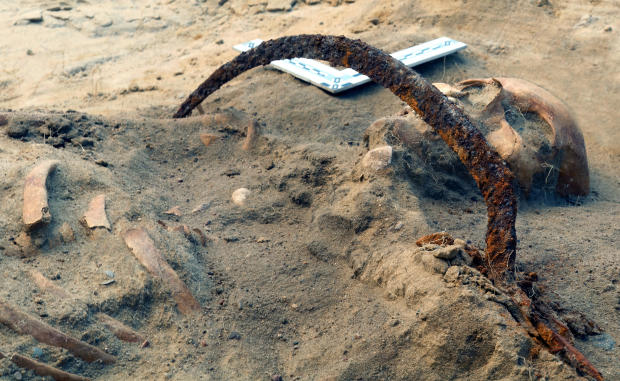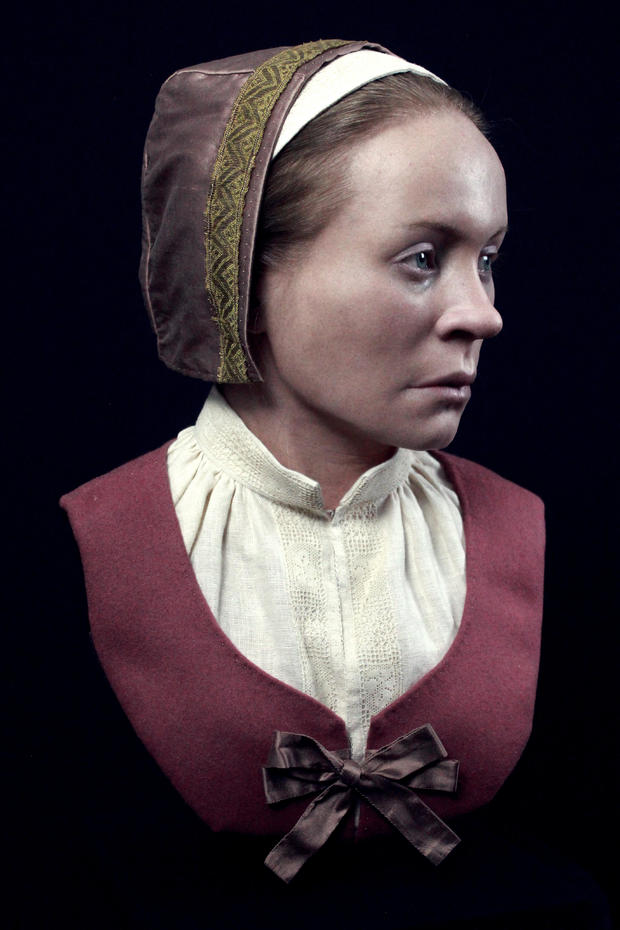
Archaeologists reconstruct face of 400-year-old “vampire” buried with iron sickle across her neck
Two years ago, archaeologists in Poland made a discovery at a gravesite they could only describe as “astonishing” — the remains of a woman with a sickle around her neck and a triangular padlock on her foot.
Found in an unmarked cemetery in the village of Pien, the 400-year-old woman was thought to be deemed a vampire and those who buried her placed the farming tool across her throat, according to ancient beliefs, to prevent her from returning from the dead.
A research team from the Nicolaus Copernicus University in Torun made the unique discovery in August 2022, and working with Swedish archaeologist Oscar Nilsson, the team used DNA, 3D printing and clay to reconstruct the face of Zosia, as she was called by locals.
Oscar Nilsson – Project Pien/Handout via REUTERS
“It’s really ironic, in a way,” Nilsson told the Reuters news agency. “These people burying her, they did everything they could in order to prevent her from coming back from the dead … we have done everything we can in order to bring her back to life.”
social media post, Nilsson said that, according to legend, Zosia was buried only with the padlock, but when the villagers began experiencing some unexplainable bad luck, they decided they needed to take further action.
“They opened her grave, found the padlock now open, and in great panic placed the sharp blade of a sickle over her neck,” Nilsson said. “In case she would arise.”
Nicolaus Copernicus University, Torun/Handout via REUTERS
This type of practice became common throughout Poland in the 17th century, as a response to a reported vampire epidemic.
Professor Dariusz Polinski, who led the research team from Nicolaus Copernicus University, said that in addition to practices with a sickle, sometimes corpses were burned, smashed with stones or had their heads and legs cut off. Just last month, archaeologists announced they had found the remains of a decapitated “vampire child” in Poland.
In an interview with CBS News in 2022, Polinski said the discovery of Zosia’s remains left him speechless.
“Such a discovery, especially here in Poland, is astonishing, especially now — centuries later,” he said. “Pure astonishment.”
Magdalena Zagrodzka, who was also on the research team that found Zosia, said the woman’s remains also had a silk headdress, which was woven with gold or silver thread. Zagrodzka said the cap is evidence of the high social status of the woman.
To reconstruct the woman’s face, Nilsson created a 3D-printed replica of the skull using information about the woman’s age, weight and other details to sculpt muscles and facial features, according to a video showing him at work.
“I’m used to reconstructing faces,” Nilsson said, “but in this case, also, I’m looking forward to giving her some human dignity back.”
Oscar Nilsson – Project Pien/Handout via REUTERS
contributed to this report.
Stephen Smith
Source: cbsnews.com

